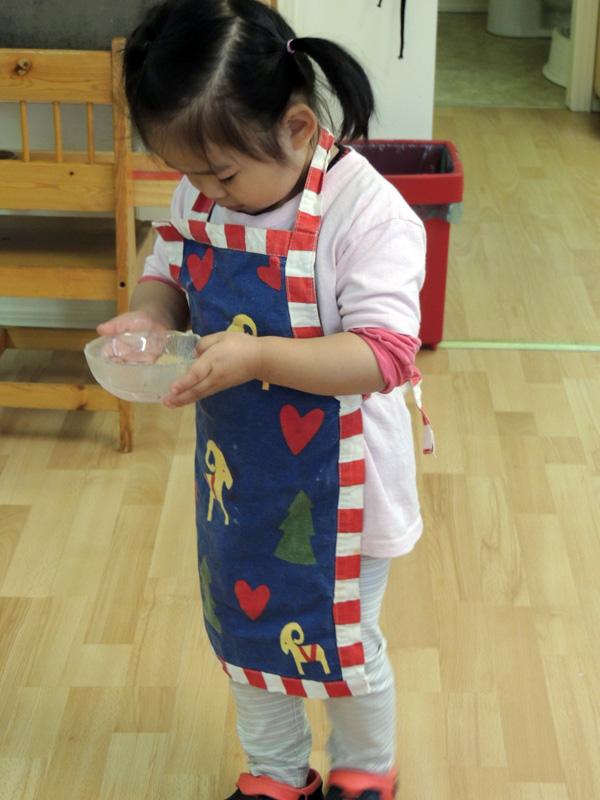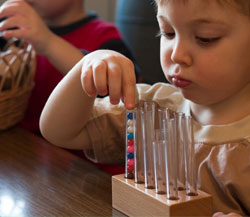 In the Montessori classroom children practice how to be self-sufficient, self-supporting and self-reliant.
In the Montessori classroom children practice how to be self-sufficient, self-supporting and self-reliant.
The specialized learning environment promotes the physical, emotional and cognitive development children need to become independent. The tables and chairs are child-sized; the shelves are low and easy to reach; the materials are colour-coded and built for small hands.
Zippers, buttons and snaps are mounted on dressing frames to facilitate ease with practice. The number activities have the precise quantity of counters, no more and no less, so that the materials give direct feedback for accuracy in counting without adult input. The movable alphabet is made of die cut wood letters that allow students to make words and sentences independently.
It is with specific goals in mind, that we guide a child as young as two and a half to carry water across the room in a shallow glass bowl. The simple act of slowing down at this age requires a new level of self-control, focus and concentration. If we were to provide a bowl that was deeper and made of plastic, would the limits of the exercise be as impactful on the child? Are we holding her capable? When we trust in the child’s ability to rise to the challenge, we teach self-esteem and self-confidence. When children are in control of their bodies and their environment, they are more likely to see themselves as competent both in the classroom and out in the world.






